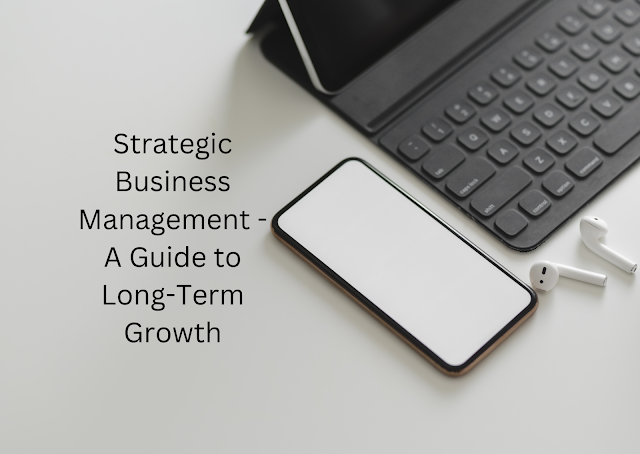Sanfilippo Paladino - From Manager to Leader - Developing Your Leadership Style
Transitioning from a manager to a leader is a significant evolution in one's career. While management focuses on processes, tasks, and systems, leadership goes beyond to inspire, motivate, and guide people toward a shared vision. Developing your leadership style is a journey that involves self-awareness, continuous learning, and a commitment to personal growth. In this blog post, we'll explore the key differences between managers and leaders, and provide actionable tips to help you develop your unique leadership style.
The
Difference Between Managers and Leaders
- Focus on Vision vs. Tasks:
- Managers: Primarily concerned with
planning, organizing, and coordinating tasks to achieve specific goals.
They ensure that daily operations run smoothly and efficiently.
- Leaders: Focus on the bigger picture,
setting a vision for the future and inspiring others to work towards it.
They motivate and guide their teams to achieve long-term objectives.
- Authority vs. Influence:
- Managers: Rely on their formal authority
and position to get things done. They enforce rules, policies, and
procedures.
- Leaders: Influence others through their
behavior, values, and charisma. They build trust and inspire people to
follow them voluntarily.
- Managers: Often focus on controlling
processes and ensuring compliance. They monitor performance and correct
deviations.
- Leaders: Empower their teams by
delegating authority, encouraging autonomy, and fostering a sense of
ownership among team members.
- Short-Term Goals vs. Long-Term
Vision:
- Managers: Concentrate on achieving
immediate objectives and meeting deadlines. Their focus is on short-term
results.
- Leaders: Emphasize long-term growth and
development. They strategically plan for the future and inspire their
teams to innovate and excel.
Developing
Your Leadership Style
- Cultivate Self-Awareness: Understanding your strengths,
weaknesses, values, and emotional triggers is the first step in developing
your leadership style. Regular self-reflection and seeking feedback from
peers, mentors, and team members can provide valuable insights into your
behavior and its impact on others.
- Define Your Vision and Values: Effective leaders have a clear
vision and set of values that guide their actions and decisions. Reflect
on what you want to achieve and the principles you stand by. Communicate
this vision and values consistently to your team, aligning your actions
with your words.
- Develop Emotional Intelligence: Emotional intelligence (EI) is
crucial for effective leadership. It involves understanding and managing
your own emotions and those of others. Enhance your EI by practicing
empathy, active listening, and stress management. Building strong
emotional connections with your team fosters trust and collaboration.
- Adopt a Coaching Mindset: Transition from a directive
management style to a coaching leadership approach. Focus on developing
your team members' skills and potential. Provide guidance, support, and
constructive feedback. Encourage continuous learning and create
opportunities for professional growth.
- Foster a Positive Culture: Leaders play a significant role
in shaping organizational culture. Promote a positive, inclusive, and
supportive work environment. Recognize and celebrate achievements,
encourage open communication, and create a safe space for innovation and
risk-taking.
- Be Adaptable and Open to Change: Effective leaders are adaptable
and open to new ideas and approaches. Embrace change and encourage your
team to do the same. Stay informed about industry trends and continuously
seek ways to improve and innovate.
- Lead by Example: Your actions speak louder than
words. Demonstrate the behavior and work ethic you expect from your team.
Show integrity, accountability, and resilience. Leading by example sets a
powerful standard and inspires others to follow suit.
- Communicate Effectively: Clear and effective
communication is vital for leadership. Articulate your vision,
expectations, and feedback clearly and constructively. Listen actively to
your team’s ideas, concerns, and suggestions. Transparent communication
fosters trust and ensures everyone is aligned with the team’s goals.
- Build Strong Relationships: Invest time in building strong,
trusting relationships with your team members. Understand their individual
motivations, strengths, and areas for development. A leader who genuinely
cares about their team creates a loyal and motivated workforce.
- Stay Committed to Personal Growth: Leadership is an ongoing journey
of personal and professional development. Stay committed to learning and
growing. Seek out leadership training, read widely on leadership topics,
and engage with mentors and coaches to continuously refine your leadership
style.
Transitioning from a manager to a
leader requires a shift in mindset, skills, and behaviors. By cultivating
self-awareness, defining your vision, developing emotional intelligence,
adopting a coaching mindset, fostering a positive culture, being adaptable,
leading by example, communicating effectively, building strong relationships,
and staying committed to personal growth, you can develop a leadership style
that inspires and empowers your team. Remember, leadership is not about a title
or position; it’s about making a positive impact




Comments
Post a Comment